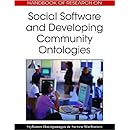
lifespan of the community
January 20, 2007I have just read an elegant article about social software community lifespan by avanoo:
http://avanoo.wordpress.com/2007/01/19/why-social-media-sites-will-have-the-lifespan-of-a-guinea-pig/
Online communities thrive at first, but then grow too big… and their growth becomes coupled with the growth of dominant, self-promoting social groups… who dominate for a while until others decide to subvert, sabotage or circumvent the established order, at which point the original members leave, to be replaced by spammers (vultures), who spam what’s left of the community into oblivion.
This pattern suggests that social media – the marriage of media and community – is inherently unstable, and that today’s social media sites are simply temporary organizations that will eventually flicker out.
This provoked me to search more information about community lifespan and i came to the article on biology website:
http://www.bioweb.uncc.edu/Faculty/Menhinick/Ecology/I_COMMUNITY_ECOLOGY.htm
It seems metaphorically very appropriate to imagine communities the way if the community members were plants.
After all.. the rhizomic metaphor of communities has been introduced to replace the tree metaphor (Gilles Deleuze and Felix Guattari: “Rhizome” (1976), “A Thousand Plateaus” (1980) )
Here are some basics about biological communities:
THE COMMUNITY AS A UNIT
Individualistic approach. Most scientists tend to view communities as collections of species, each out for itself.
Most communities consist of two distinct interdependent zones
The autotrophic zone is the photosynthetic zone where green plants combine inorganic materials into organic compounds with energy from sun.
The heterotrophic zone is the low-light zone of decomposition.
The autotrophic and heterotrophic zones interact so that the community functions as a unit.
Communities may be divided into:i) Complete (major, autotrophic) community that requires only sunlight and can survive in isolation from other communities; ii) Incomplete (minor, heterotrophic) communities which are dependent on other communities for energy and/or minerals
Most areas have unique organisms not found elsewhere.Spatial change in communities within biomes
Dominant plants often gradually change from one area to another (blending, zonation, continuum).
These changes are caused by variation in environment, biological interactions, or age.
Dominants are usually capable of utilizing a wide variety of niches, have a wide distribution
Subdominants are more specialized, more limited in tolerances
Where two communities meet, they may change either abruptly or gradually.
Types of edges: i) Stable (inherent) edges are determined by habitat; ii) Maintained edges emerge due to changes from periodic disturbances; iii) Variable (induced) edges: changes from non-periodic disturbances
The communities may change abruptly or they may blend together: Edge: where different communities change abruptly; ecotone: where different communities intergrade, blend
i) Either or both communities may invade the other; ii) Edge species advance into the other communities as far as they can
Edges and ecotones tend to have an unusually high number of species.Succession is the replacement of one community with another with time.
The sequential change in relative abundance of dominants
Lake succession: Ponds are continually filling with sediment and eventually become lowland
Heterotrophic succession. Succession also occurs in heterotrophic communities, those based upon organic material derived from other areas.Succession usually occurs because species in each community change the environment, making the area less favorable for themselves, and more favorable for other species. Species tolerant of the new conditions survive; the best competitors survive.
Inhibition: each species tends to maintain its position until it dies of old age or of allelopaths
Facilitation: The organisms at a given successional stage make the environment more suitable for later successional stages.
Tolerance: The organisms of a given successional stage have little impact on later successional stages.
Eventually a self-sustaining climax community develops in the area.
In cyclic replacement, there is no final climax.
In most areas of the world, succession tends to proceed slowly toward the normal climatic climax.
Climax vegetation remains stable as long as the climate or other major variables have not changed.
Organisms feed on each other to form a food chain in simple communities and a food web in more complex ones
Areas that have been undisturbed for a long time have time to establish beneficial interrelationships.
Key species are those species that have a high importance to the community.
Alpha diversity: diversity of specific community
Beta diversity: diversity between communities (i.e., similarity)
We can measure species diversity by the total number of different species or the relative numbers of each species.There is growing evidence that communities may act as functional units which regulate their own growth
Communities act as a unit competing with other communities for space. They keep “foreign” species out
The tendency for all plant communities to end in the same climax community is called convergence.Clements (1916) presented a deterministic unidirectional view of succession where the present pattern is governed by the past pattern.
Gleason (1926) stated that associations or communities, were not highly organized, but aggregations of independent species, each specialized to survive on habitats they were adapted for. Current view on the nature of community structure is close to the individualistic concept.
Image from:
http://www.okstate.edu/artsci/botany/bisc3034/lnotes/successi.htm

I would love to find a community graph to resemble this succession graph….
but maybe we are not at that stage of succession yet…or this succession idea is not working in human virtual communities 🙂
Here is something about the blogs..but it isnt the community view..
I am adding some more interesting information to this blog entry, because i found a nice article with the community lifetime images:
http://www.readwriteweb.com/archives/trendwatching_wired_or_tired.php

Others ABOUT lifespan of the community
http://icd.si.umich.edu/684/node/244
http://elramsay.com/art-education/lifespan.html










Leave a comment